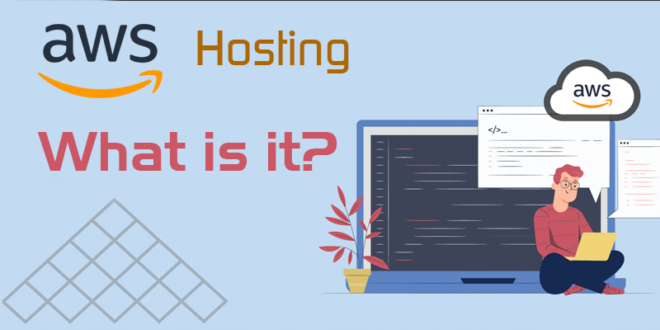In the realm of cloud computing and web hosting, Amazon Web Services (AWS) stands out as a leader, offering a vast array of services and solutions designed to cater to the needs of businesses and developers alike. AWS hosting provides unparalleled scalability, flexibility, and reliability, making it a preferred choice for enterprises, startups, and individual developers. In this comprehensive guide, we will delve into the intricacies of AWS hosting, exploring its key features, benefits, services, and tips for getting started.
What is AWS Hosting?
AWS hosting refers to the suite of cloud computing services provided by Amazon Web Services, enabling users to host websites, applications, and data on the cloud. AWS offers a broad range of hosting solutions that cater to various use cases, from simple static websites to complex, high-traffic applications.
Key Features of AWS Hosting
AWS hosting is renowned for its robust set of features, which include:
1. Scalability
AWS hosting provides auto-scaling capabilities, allowing your applications to automatically scale up or down based on demand. This ensures optimal performance during traffic spikes and cost-efficiency during periods of low activity.
2. Global Reach
AWS has data centers located in multiple regions around the world. This global infrastructure enables you to deploy your applications closer to your users, reducing latency and improving user experience.
3. Reliability
AWS boasts a high level of reliability and uptime, with service level agreements (SLAs) guaranteeing 99.99% availability for many of its services. This ensures that your applications remain accessible and operational.
4. Security
AWS provides robust security measures, including encryption, identity and access management (IAM), and compliance certifications (e.g., GDPR, HIPAA). These features help protect your data and applications from threats and vulnerabilities.
5. Flexibility
AWS offers a wide range of services and configurations, allowing you to choose the best tools and infrastructure for your specific needs. Whether you’re running a simple website or a complex application, AWS has the right solution.
Benefits of AWS Hosting
Leveraging AWS hosting comes with numerous benefits:
1. Cost-Effectiveness
AWS operates on a pay-as-you-go pricing model, allowing you to only pay for the resources you use. This flexibility can lead to significant cost savings, especially for startups and small businesses.
2. Comprehensive Ecosystem
AWS offers a comprehensive ecosystem of services, including compute, storage, databases, machine learning, analytics, and more. This integrated approach allows you to build, deploy, and manage applications efficiently.
3. Innovation and Updates
AWS continuously innovates and updates its services, providing users with access to the latest technologies and features. This ensures that your applications can leverage cutting-edge solutions and stay competitive.
4. Developer-Friendly Tools
AWS provides a variety of developer tools and SDKs (software development kits) that simplify the process of building and deploying applications. Services like AWS CodePipeline, AWS CodeBuild, and AWS CodeDeploy streamline continuous integration and deployment (CI/CD).
5. Extensive Documentation and Support
AWS offers extensive documentation, tutorials, and a supportive community. Additionally, AWS provides various support plans to help you resolve issues and optimize your usage.
Core AWS Hosting Services
AWS offers a plethora of services tailored to different hosting needs. Here are some core services you might use:
1. Amazon EC2 (Elastic Compute Cloud)
Amazon EC2 provides scalable virtual servers, known as instances, which can be configured with various CPU, memory, and storage options. EC2 allows you to run applications with the flexibility to scale resources as needed.
2. Amazon S3 (Simple Storage Service)
Amazon S3 offers scalable object storage for data backup, archival, and content delivery. S3 is known for its durability, availability, and security, making it a popular choice for storing static website content and large datasets.
3. Amazon RDS (Relational Database Service)
Amazon RDS simplifies the setup, operation, and scaling of relational databases, such as MySQL, PostgreSQL, and SQL Server. RDS handles routine database tasks like backups, patching, and replication.
4. Amazon CloudFront
Amazon CloudFront is a content delivery network (CDN) that distributes your content globally, improving website performance by caching content closer to users. CloudFront integrates seamlessly with other AWS services like S3 and EC2.
5. AWS Lambda
AWS Lambda is a serverless computing service that lets you run code without provisioning or managing servers. Lambda automatically scales your applications in response to incoming requests, making it ideal for event-driven applications.
6. Amazon Lightsail
Amazon Lightsail offers a simplified interface for managing virtual private servers (VPS). It provides pre-configured options for web applications, databases, and development stacks, making it a great choice for beginners and small projects.
Getting Started with AWS Hosting
Here’s a step-by-step guide to getting started with AWS hosting:
1. Create an AWS Account
Visit the AWS website and create an account. You’ll need to provide payment information, but AWS offers a free tier that lets you experiment with certain services at no cost for the first year.
2. Choose a Hosting Solution
Determine the best hosting solution for your needs. For a simple website, Amazon Lightsail or S3 (for static websites) might be sufficient. For more complex applications, consider using EC2, RDS, and other related services.
3. Set Up Your Environment
Use the AWS Management Console or AWS CLI (Command Line Interface) to set up your environment. Launch EC2 instances, configure security groups, set up databases with RDS, and store static content in S3.
4. Deploy Your Application
Deploy your application using AWS services. If you’re using EC2, you can SSH into your instances and upload your application code. For serverless applications, you can upload your code directly to AWS Lambda.
5. Configure DNS and CDN
Use Amazon Route 53 to manage your domain names and DNS settings. Set up Amazon CloudFront to distribute your content globally and improve performance.
6. Monitor and Optimize
Utilize AWS CloudWatch to monitor your resources and applications. Set up alerts to stay informed about performance issues or resource usage. Regularly review your architecture and optimize your setup to ensure cost-efficiency and reliability.
AWS hosting offers a powerful and flexible platform for hosting websites and applications, catering to a wide range of needs from simple blogs to enterprise-level solutions. Its scalability, reliability, and comprehensive ecosystem of services make it a top choice for businesses and developers. By understanding the key features, benefits, and services of AWS hosting, and following best practices for getting started, you can leverage the full potential of Amazon Web Services to drive your online success.
 webhostfair Web hosting news, reviews | Best web hosting service for your business
webhostfair Web hosting news, reviews | Best web hosting service for your business

